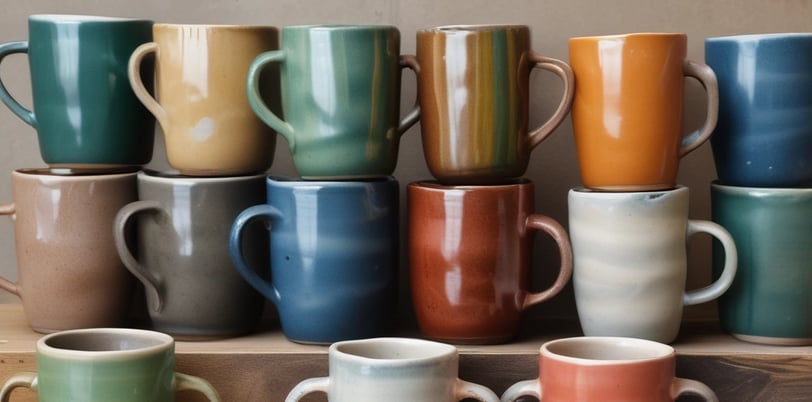How Much Can a Potter Sell Handcrafted Mugs For?
How to set a price
3/10/20252 min read


If you’re a potter looking to sell your handcrafted mugs, pricing can be one of the trickiest aspects to determine. You want to ensure your work is valued appropriately while remaining competitive in the market. Let’s explore the factors that influence pricing and how to determine the right price for your unique creations.
Pricing Ranges for Handcrafted Mugs
Handmade pottery mugs can vary significantly in price depending on skill level, materials, and branding. Below are general pricing tiers for reference:
Beginner / Hobbyist: $15 - $30 per mug
Intermediate / Small Studio: $30 - $60 per mug
Established / High-End Artisan: $60 - $150+ per mug
These are rough estimates, and prices can fluctuate based on several key factors.
Factors That Influence Pricing
Understanding what goes into pricing will help you set a fair yet profitable price for your handcrafted mugs. Here are some essential elements to consider:
1. Material Costs
The cost of clay, glazes, firing, tools, and other materials should be factored into your pricing. High-quality materials, specialty glazes, or unique clay bodies may increase the cost of production and, therefore, the final selling price.
2. Time & Labor
Handmade pottery requires a significant amount of time, from shaping and trimming to glazing and firing. If you take hours to perfect a single mug, you should ensure you’re being compensated for your labor.
3. Design & Uniqueness
The complexity of a mug’s design can greatly impact pricing. Simple, functional mugs may fall on the lower end of the pricing spectrum, while mugs with hand-painted details, carving, intricate glazing techniques, or custom features may be priced much higher.
4. Brand & Reputation
If you have built a strong reputation as a ceramic artist, you can command higher prices for your work. Collectors and loyal customers are often willing to pay more for a piece from a well-known artist.
5. Market Demand
Your target audience will also influence how much you can charge. Selling at a local craft fair may require different pricing than selling through an online shop or to collectors. Understanding your audience's willingness to pay is crucial.
6. Location & Selling Platform
Where you sell your mugs matters. A mug priced at $25 in a small-town craft fair might sell for $50+ in a high-end boutique or online marketplace. Platforms like Etsy, Instagram, or personal eCommerce websites also allow for different pricing strategies.
How to Determine Your Pricing
To set a price that is both fair to you and attractive to buyers, consider this simple formula.
For example, if your material cost per mug is $5, and you spend an hour making it (valuing your time at $20/hour), you should factor in additional overhead (studio rent, electricity, etc.) and profit to arrive at a sustainable price.
Example Pricing Calculation
Let’s say you are making a handcrafted mug and want to determine a fair price:
- Material Costs (clay, glaze, firing costs): $5
- Time Spent (1 hour per mug, paying yourself $20/hour): $20
- Overhead Costs (studio rent, electricity, tools, etc. - estimated per mug): $5
- Profit Margin (to grow your business and account for unforeseen expenses): $10
Final Price: $40 per mug
Conclusion
Pricing your handcrafted pottery mugs involves more than just guessing what customers will pay. By considering material costs, labor, design complexity, and market demand, you can confidently set prices that reflect the true value of your work. Whether you’re just starting out or an experienced potter, valuing your craft appropriately will ensure you sustain and grow your business.
Do you have experience pricing your handcrafted pottery?
Share your thoughts and strategies in the comments!
Fresh from the kiln! Find out when new ceramic pieces are ready to be admired.
Bonita Farm © 2025. All rights reserved.
